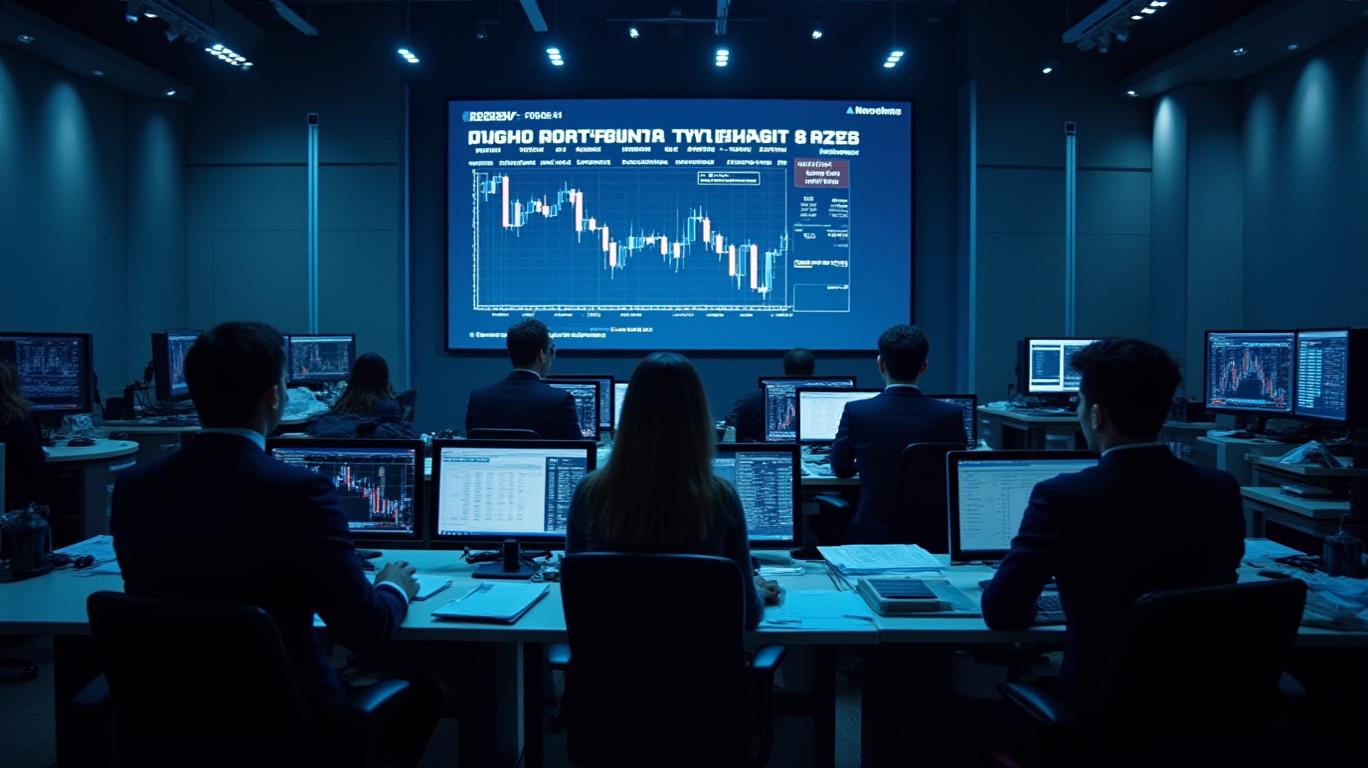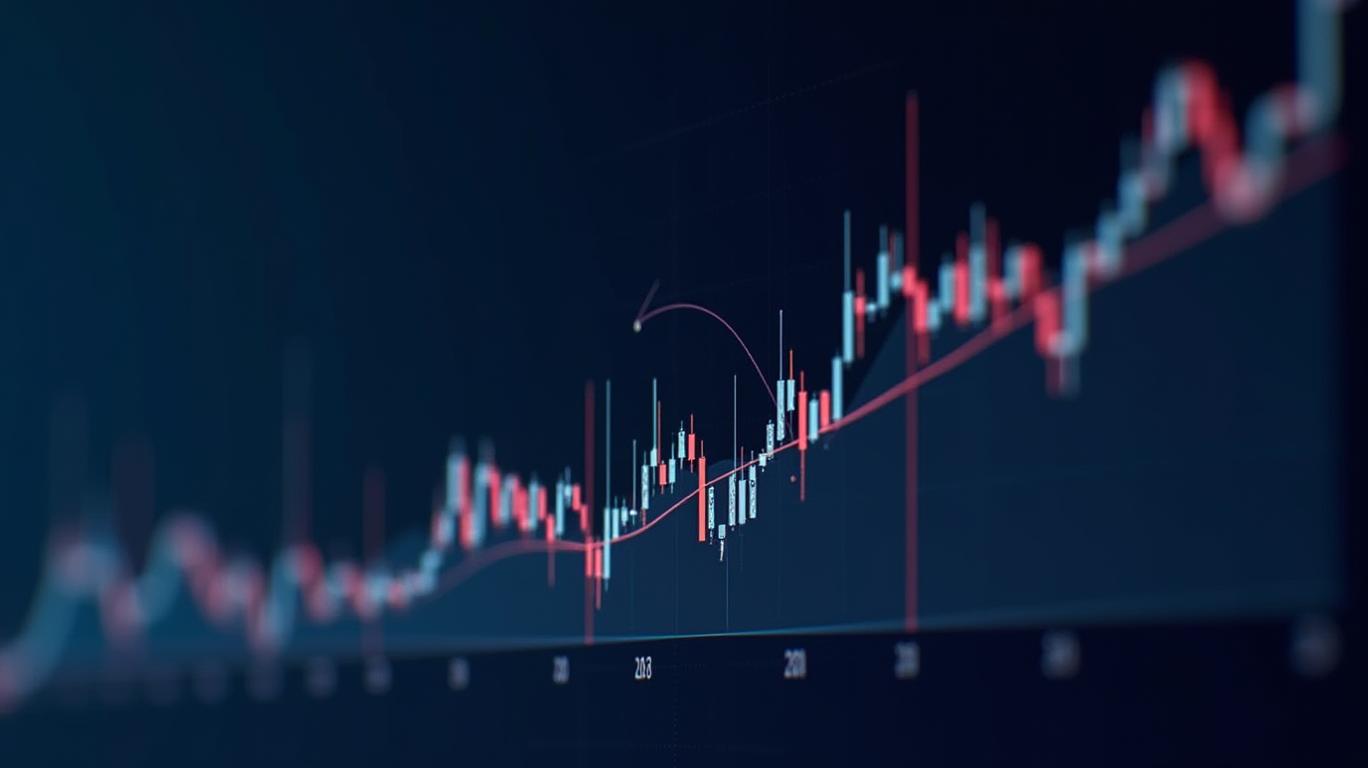HSBC Drives FTSE 100 Gains Amid Mixed Macro Winds
The FTSE 100 closed April 2025 at 8,417.34, marking an 11-day winning streak fueled by resilient corporate earnings and cautious optimism. Among the key drivers was HSBC Holdings (HSBC), whose strategic moves and robust Q1 performance anchored investor confidence in the blue-chip index. However, persistent macroeconomic risks—from trade tensions to geopolitical volatility—highlight the precarious balance between growth and uncertainty.
HSBC: A Beacon of Stability in Volatile Markets
HSBC’s stock price surged 1.5% in Hong Kong trading following its Q1 2025 earnings report, closing April at £57.67 after dipping to a low of £52.11 on April 21. The bank reported a £9.48 billion pre-tax profit, far exceeding analyst estimates, and announced a £3 billion share buyback—a bold signal of financial health.
The buyback, coupled with restructuring plans targeting £300 million in annual cost savings, alleviated concerns over upfront restructuring costs (£1.8 billion by 2026) and trade policy risks. Despite these positives, HSBC warned of lingering macroeconomic headwinds, including U.S. tariffs on steel, aluminum, and autos, which could strain global supply chains and consumer sentiment.
FTSE 100: Sectoral Resilience Amid Global Crosswinds
The FTSE 100’s climb to 8,417.34 by April’s mid-month was bolstered by sectoral outperformance:
1. Consumer Staples: Companies like Entain PLC surged 6.8% after its U.S. joint venture, BetMGM, posted a $22 million Q1 profit, reversing a $132 million loss from 2024.
2. Tech & Logistics: Deliveroo jumped 17% on news of a potential $180-per-share acquisition offer from DoorDash, signaling renewed investor appetite for high-growth targets.
3. Banking & Energy: HSBC’s stabilization, along with gains in BP (+3%) and AstraZeneca (+2%), offset broader fears of a U.S. GDP contraction.

Risks Lurking Beneath the Surface
While the FTSE 100’s momentum is encouraging, three critical risks cloud the outlook:
1. Trade Tensions: U.S.-China trade disputes remain unresolved, with U.S. Treasury Secretary Scott Bessent criticizing China’s tariffs as “unsustainable.” Beijing’s refusal to back down risks further disruptions to global supply chains.
2. Economic Softness: Analysts forecast U.S. GDP growth of -0.3% to +0.4% for Q1 2025, with nonfarm payrolls expected to drop to 105,000 in April. A potential Fed rate-cut cycle looms if job markets weaken.
3. Geopolitical Volatility: A major blackout in southern Europe underscored infrastructure vulnerabilities, while Italian banking consolidation (e.g., Mediobanca’s bid for Banca Generali) highlighted sector-specific risks.
Data-Driven Outlook: HSBC as a Leading Indicator
HSBC’s performance serves as a microcosm of the FTSE 100’s challenges and opportunities. Its Q1 profit beat, despite a 25% YoY decline, reflects resilience in wealth and corporate banking segments. Meanwhile, its share buyback—exceeding analyst expectations—suggests management confidence in long-term recovery.
Conclusion: Cautionary Optimism for the FTSE 100
The FTSE 100’s April gains are a testament to corporate adaptability, but macro risks demand vigilance. HSBC’s stabilization and strategic moves have been pivotal, yet its warnings on trade policies and restructuring costs underscore near-term fragility.
Key Takeaways:
- HSBC’s buyback and earnings beat (+23% vs. 2024 Q4) validate its restructuring strategy.
- The FTSE 100’s climb to 8,417.34 reflects sectoral resilience, but reliance on a few majors like HSBC and Entain limits broad-based strength.
- Trade tensions and U.S. economic data will dominate sentiment in coming months; investors should monitor Q1 earnings for signs of lasting consumer and business health.
In this environment, HSBC’s role as a blue-chip anchor remains critical. Yet, with the FTSE 100’s 11-day rally built on fragile optimism, the path forward hinges on resolving macro risks—or at least containing them. As the old adage goes: In bull markets, hope trumps fear—but only until reality intrudes.
JR Research
Data as of April 2025. Analysis excludes political and regulatory risks not explicitly quantified.


_442a2dcc1749832873286.jpeg)
_e68fac6d1749831664430.jpeg)






